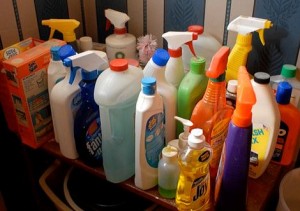
How healthy is your home?
The question has little to do with how fastidious you are about keeping your home clean. It has everything to do with hidden dangers that could cause medical problems, such as asthma attacks or lung cancer. Hidden dangers include radon gas, traces of lead paint, insulation made with asbestos, and mold and mildew embedded in carpeting.
More than 30 million U.S. homes have significant health problems, according to the Environmental Protection Agency and the Department of Housing and Urban Development. More than 20 million homes have a lead-based paint hazard, 17 million have high levels of indoor allergens, and more than 6.8 million have radon exposures at levels the EPA considers dangerous.
But many homeowners and renters aren’t aware of the link between their housing and their health. Radon exposure has no immediate symptoms, for example, and carbon monoxide poisoning can initially be misdiagnosed as the flu. Exposure to some toxins may be confused with allergies.
Nearly a dozen federal agencies joined forces recently to develop the Healthy Homes Work Group, with the goal of reducing health and safety hazards at home.
A recent report from the group, “Advancing Healthy Housing: A Strategy for Action,” explains the range of potential dangers in homes and suggests a plan of action for policymakers and resources for homeowners and renters.
Information on indoor air quality is available from the Lawrence Berkeley National Laboratory’s website. Discussion topics include the impact of building ventilation on health and performance, biological contaminants caused by indoor dampness, the dangers of volatile organic compounds, and the benefits of improving indoor environmental quality.
Looking for more information? The U.S. Centers for Disease Control and Prevention has a well-stocked resource library, including healthy-home tips for every room of your house.
The website of the Healthy Homes Work Group offers links to a variety of resources, including its list of seven principles for a healthy home:
-
Keep your home dry. Damp houses provide a nurturing environment for mites, roaches, rodents, and molds, all of which are associated with asthma.
-
Keep your home clean. Clean homes help reduce pest infestations and exposure to contaminants.
-
Keep your home pest-free. Recent studies show a relationship between exposure to mice and cockroaches and asthma episodes in children; yet inappropriate treatment for pest infestations can exacerbate health problems, since pesticide residues in homes pose risks for neurological damage and cancer.
-
Keep your home safe. Falls are the most frequent cause of residential injuries to children, followed by injuries from objects in the home, burns, and poisonings.
-
Keep your home contaminant-free. Chemical exposures include lead, radon, pesticides, volatile organic compounds, and tobacco smoke.
-
Keep your home ventilated. Studies show that increasing the fresh air supply in a home improves respiratory health.
-
Keep your home maintained. Poorly maintained homes are at risk for moisture and pest problems. Deteriorated lead-based paint in older housing is the primary cause of lead poisoning.
(Photo by Warmest Regards, via Flickr.)
